To further Wild Ones’ mission to connect people and native plants, we are excited to continue this monthly blog focused on native plants in the national news. This regular feature aims to educate, engage, and inspire action by spotlighting conservation issues and scientific findings related to native flora.
Colorado Springs: the city with the healing scar
Pikeview Quarry, a former limestone mine near Colorado Springs which closed in 2018, is in the final stages of reclamation. Douglas fir (Pseudotsuga menziesii), Ponderosa pine (Pinus ponderosa), Pinyon pine (Pinus monophylla), and Rocky Mountain juniper (Juniperus scopulorum) are some of the 31,000 native trees, plants, and scrub that were being planted by July 1st.

Douglas-Fir(Pseudotsuga menziesii)

Ponderosa Pine(Pinus ponderosa)
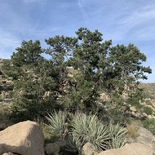
Singleleaf Pinyon(Pinus monophylla)
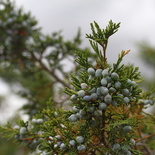
Rocky Mountain Juniper(Juniperus scopulorum)
According to Jerald Schnabel, president of Castle Aggregates the company that now owns the quarry, material from the quarry built 50% or more of Colorado Springs. The 100-acre reclamation process is now in its final stages and he anticipates it will take 5-10 years for the plants to grow enough for the visible scar from the quarry to fade.
Planting Party at Utah Lake
After 13 years of fighting Phragmites spp., toxic algae, and other invasive species, this is the first year that volunteers have started planting native species in their place. After a controversial cleanup proposal failed, the Utah Lake Authority was created and lawmakers dedicated more resources to restoring and cleaning the lake while the Conserve Utah Valley group alerted the public and the state to the importance of saving Utah Lake.

Reed(Phragmites spp.)
“There’s been a lot of talk about the Great Salt Lake in recent years. Utah Lake is a major source of water to Great Salt Lake. If Utah Lake dies? In all likelihood, the Great Salt Lake dies, too. So we’re a critical part of that ecosystem” says Luke Peterson, the executive director of the Utah Lake Authority.
Planting parties, organized by the Utah Lake Authority, are being organized to plant native species along the shoreline and are actively looking for volunteers to join in their efforts.
After years of killing invasive species, native plants finally return to Utah Lake – Fox13Now.com
South Dakota: Road Trip!
South Dakota State University (SDSU) is taking its Native Plant Initiative on the road, reaching out to communities through lectures teaching the importance of native plants and encouraging local residents to re-introduce native plants into their landscaping. “Native plants are part of our natural heritage in South Dakota, and because of that, they are a foundational part of our ecosystem here. Basically, everything that lives in the state of South Dakota relies on native plants in one way or another”, said Bret Lang, a SDSU plant PhD candidate.
The Native Plant Initiative is led by Lora Perkins, a professor in the Department of Natural Resource Management, and aims to support the use of native plants in private and public lands in the Northern Great Plains through research, education and outreach. “We want to get more plants and restoration out in the wildlands. We want to get more farmers growing native seeds, and specifically, what you see here today is we’re working on getting more native plants into landscaping” Perkins said. Perkins explained that adding just a couple of native plants in your yards has benefits.
SDSU Native Plant Initiative hits the road – Dakota News Now
In a Warming World, Non-native Species Expanding Ranges Faster than Native Species
Non-native species are expanding their ranges much faster than native species, according to a study that was published in Annual Reviews of Ecology, Evolution and Systematics. Non-native plants are moving at three times the rate of native plants. In a rapidly warming climate and its impacts on habitat, plants and animals must shift their ranges by 3.25 kilometers a year to keep up and native species, moving at an average of 1.74 kilometers a year, are not keeping up.
As part of this research, Bethany Bradley and her co-authors wanted to investigate how far native and non-native species would spread in a warming world, since not every ecosystem is a suitable habitat for these species. Their results showed that non-native species will find more acceptable habitat than native species. While discouraging, Bradley stated “while this means that non-native species might have more territory to gain with climate change, it also means that they’ve got more territory to lose as some range margins become increasingly unsuitable.”
Data was also compiled to show the human role in how fast non-native species are spreading: either accidentally (e.g. stowaways in shipping containers) or intentionally (e.g. nurseries selling invasive ornamental plants that gardeners buy and plant).
Bradley concludes: “It’s really clear that people are very good at moving species, and this is one of the biggest advantages that non-native species have. We need to seriously consider and begin implementing assisted migration”—the practice of deliberately helping native species move to more suitable locations—“if our native plants and animals are to stand a chance.”
Neither Rain nor Snow: Pennsylvania Post Office Plants Native Plant Gardens
The Freeport Post Office is planting two beds of native plants on its grounds to support local pollinators. Last month, 18 native plant species including Pennsylvania sedge (Carex pensylvanica) and spicebush (Lindera benzoin) were planted by Grace Clark, owner of Lestari Natives, and community members. Species were selected that bloomed from March to October so the plots will always be in bloom and provide food for pollinators. Cardboard and undyed mulch was used to cover plots. The garden will be low-maintenance except for initial watering. If needed, Clark plans to work with a local Girl Scout troop to maintain the area. “We want to show people that it cannot be just beautiful–it can be functional,” said Clark.
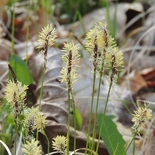
Pennsylvania Sedge(Carex pensylvanica)
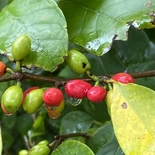
Northern Spicebush(Lindera benzoin)
This post office pollinator garden, pitched by Clark to Postmaster Jill Bernard, is a first for a post office in the region.
Jim Bonner, executive director of the Audubon Society of Western Pennsylvania, explained that native plants provide food for insects and birds. The Audubon Society encourages these types of gardens, assisting with certifying backyard habitats and is working on a similar program for spaces such as post offices, college campuses, and senior care facilities.
Freeport post office adds garden to support native pollinators – TribLive.com
No More No Mow May?
Is “No Mow May” a good idea? “No Mow May” was started in 2019 by Plantlife, a conservation charity in the United Kingdom in response to declines in native plants and animal populations and decreasing meadow ecosystems. This approach has been appealing to many conservation groups and gardeners in North America as well.
Studies have shown that the flowers growing in unmown British lawns support British pollinators. However, North American lawn flowers are frequently not native to North America but are from Europe and Asia. Many species are actually invasive species that displace native plants and contribute to soil erosion. When these non-native species are allowed to grow when lawns are not mowed, their populations increase and reduce native plant biodiversity. Even non-natives that attract pollinators can be problematic: visitors pollinate these species, helping them spread. These species also do not support a diversity of pollinators: a study found that 90% of spring insects found on dandelions belonged to one bee species (non-native honeybee), one butterfly species (the common branded skipper), and a few hoverfly species (Larson et al., 2014). Skipping mowing for a short time also doesn’t help much either: pollinators need flowering plants for the entire growing season, not just May.
Instead of not mowing and letting non-native species take over, the recommendation for North Americans is to plant a diverse number of native trees, shrubs, and flowering plants. These native plants and their pollinators have evolved together and the plants have traits that allow for the right bloom times and the right kind of pollen and nectar for native pollinators. The Center for Pollinator Research found that in April and May, flowering trees–maple, oak, and willow–provide the most pollen for bees. Christina Grazinger, professor of entomology and the director of the Center for Pollinator Research, recommends converting your yard into a true pollinator haven using native plants and flower beds instead of participating in No Mow May.
Vermont: Mermaid Caught on Camera!
False mermaid-weed (Floerkea proserpinacoides) has been rediscovered in Vermont after not being documented in the state since 1916. The “absolutely tiny” spring ephemeral with “flowers as small as the head of a pin” was seen in a picture sent by a colleague, Molly Parren, to state botanist Grace Glynn. When Glynn visited, she found hundreds of false mermaid-weed on both public and private land.
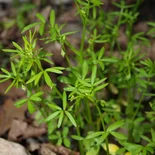
False Mermaidweed(Floerkea proserpinacoides)
It’s speculated by botanists that false mermaid-weed populations have suffered due to extreme flooding, invasive species, and human development. With its rediscovery, the plant’s status has been updated from possibly extinct to very rare and critically endangered. This plant now joins the rank of 600 rare and uncommon Vermont native plants to find and conserve.

Small Whorled Pogonia(Isotria medeoloides)
Recently, another Vermont plant was also rediscovered. In 2022, a citizen scientist found 9 specimens of the federally threatened orchid, small whorled pogonia (Isotria medeoloides) in Chittenden County, the first time the plant has been seen since 1902.

